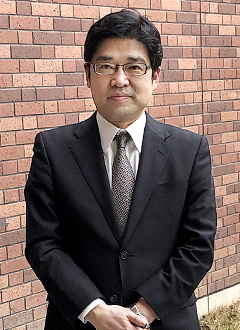Message from the Director of the Doshisha-Daikin Next Environment Research Center

On March 25, 2020, Doshisha University and Daikin Industries, Ltd. signed an agreement for comprehensive cooperation. Under this comprehensive agreement, the Doshisha-Daikin Next Environment Research Center was established on the Kyotanabe Campus of Doshisha University in April 2020. I would like to briefly introduce the projects and goals our Center is working to achieve.
The research projects undertaken by our Center are aimed at technological development which contributes to solving global environmental problems. One of our main research themes is the development of new technology for capturing, decomposing, and reusing CO2. CO2 is now one of the causes of global warming, and the reduction of CO2 is an urgent issue. Our Center is working to realize the reuse of CO2 as a resource. This means that CO2, which has always been viewed as a nuisance, can now be reused as a beneficial chemical substance. Another major research theme is the development of efficient air conditioners. According to an announcement dated May 15, 2018 by the International Energy Agency (IEA), global energy demand for air conditioners is projected to triple by 2050. However, the higher the penetration rate of air conditioners, the more energy is consumed and the more CO2 is emitted. Our Center will work to improve the efficiency of air conditioners and pursue the reduction of CO2 emissions by saving energy in air conditioners.
Along with such technological development, another important project of our Center is the development of talented people who possess knowledge in both the natural sciences and the humanities/social sciences knowledge, and who can tackle environmental problems. It is clear that environmental issues cannot be solved by focusing solely on science and technology. Therefore, our Center will offer the “Next Environment”Collaborative Creation Course as a new educational program for the fusion of the humanities and sciences. The course facilitates cooperative learning by active students and working professionals with various experiences, a design which allows participants to stimulate each other through lectures and exercises. I hope that these activities will enable the cultivation of people who are capable of seriously considering what actions they can take for the “next environment”—that is, for the future environment.
GOTO Takuya
Director, Doshisha-Daikin Next Environment Research Center
|
Message from the Director Message from the Deputy Director |